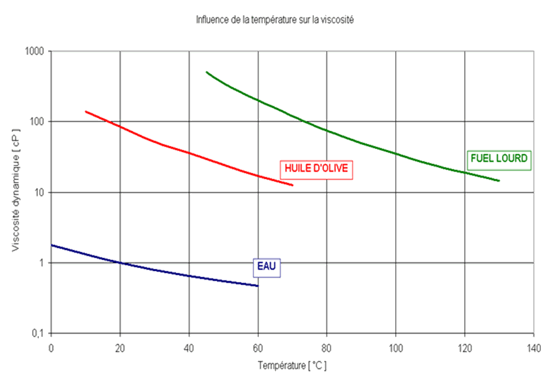Measurement of the dynamic viscosity

Continuous control of the dynamic viscosity, a factor of optimal quality of the final product
Viscosity (from Latin viscum) n. : State of being viscous. PHYS Property that any fluid has of resisting the forces that tend to move the particles that make it up relative to one another. Source: © Hachette Livre, 1997
Isaac Newton was the first to establish the fundamental law of viscosity describing the flow behavior of an ideal liquid.
τ = η.D where τ = tangential stress (N/m²) and D or g = velocity gradient (n-1)
The solution of this equation for the dynamic viscosity gives: η = τ/D in Pa.s
Note: in the SI system, the unit is the Pascal.second (Pa.s) or milliPascal.second (mPa.s). In the industrial environment we find other units of which the most used are the centipoise (cP) and the poise (P):
Viscosity versus temperature curve
- 1 Pa.s = 1 000 mPa.s
- 1 mPa.s = 1 cP
- 1 P = 100 cP
Typical viscosity values at 20 °C (mPa.s):
- Acetone: 0.32
- Water : 1
- Mercury: 1.5
- Grapefruit juice: 2~5
- Blood (at 37°C): 4~15
- Coffee cream: 10
- Olive oil: 102
- Honey: 104
- Tar: 106
- Bitumen : 108
The viscosity of liquids decreases when the temperature increases.
In industry, viscosity has a very great practical importance, because it conditions the flow of fluids in pipes and along the walls. It allows to measure directly or indirectly certain characteristics of products (texture, polymer size…). It conditions the correct operation of processes (combustion, printing, coating…).
During industrial manufacturing processes, the vibration viscometers certified explosion-proof (ATEX) and/or sanitary 3A provide all the guarantees of an excellent continuous control of the dynamic viscosity, factor of an optimal quality of the final product.
Join us on LinkedIn and YouTube
Or come and discover our solutions



